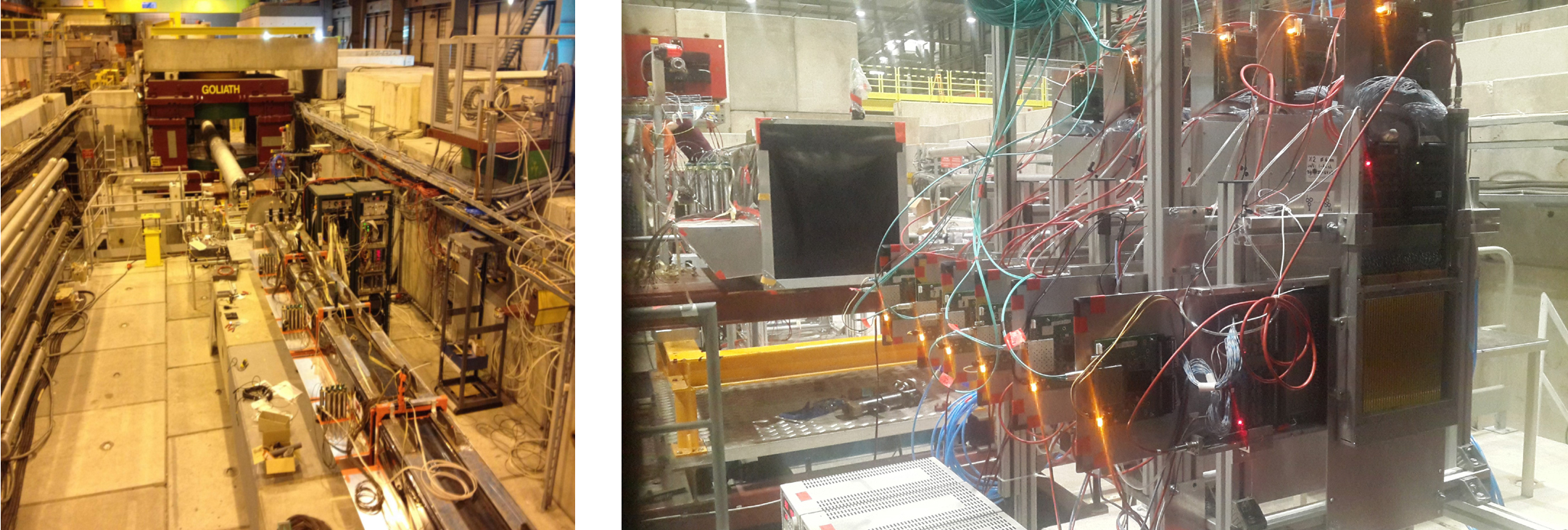Development and creation of coordinate detectors based on thin-walled drift tubes
News, 02 August 2021
JINR Encouraging Prize 2020 was awarded to a team of authors represented by E. Vasilieva, P. Volkov, Yu. Gusakov, T. Enik, I. Zhukov, G. Kekelidze, V. Kramarenko, V. Lysan, D. Peshekhonov, A. Solin for their scientific paper “Development and creation of coordinate detectors based on thin-walled drift tubes for the NA-64 at CERN”.
Gaseous coordinate detectors have been the basis of the tracking systems of modern facilities for many decades, but despite this, they continue to develop actively. In recent years, their modifications such as time projection chambers (TPCs) and detectors with sub-millimeter sensing elements based on gas electron multipliers (GEM and Micromegas) have become widespread. The interest in these detectors is associated with their ability to operate under high charged particle fluxes, decent radiation resistance, and a spatial resolution of about 100 microns. Classical drift chambers based on metal drift tubes effectively covering large areas are also undergoing a rebirth with the advent of straw tube technology that allows using more flexible design solutions that offer low costs per unit of sensitive area and have such an important advantage as a small amount of material budget. These features of straw tubes have led to their active use in the search experiments aimed at the registration of ultra-rare decays and the search for manifestations of new physics, where special requirements are imposed on the transparency and efficiency of tracking systems.
The paper submitted to the competition of the Joint Institute for Nuclear Research describes the characteristics and properties of tracking detectors produced at JINR using the technology of glued straw tubes for the NA64 experiment on the extracted electron beam of the CERN SPS.
The group from the Laboratory of High Energy Physic JINR has developed and produced two-layer straw chambers with an operating areas of 20 x 20 cm2, 50 x 50 cm2 and 120 x 60 cm2. Each two-layer chamber consists of two separate planes of straw tubes glued together with a shift of half the diameter of the tube. Straw tubes have an internal diameter of 6 or 2 mm, the wall thickness of the straw tube is 62 microns. The anode is a gold-plated tungsten wire with a diameter of 20 (for 2 mm tubes) or 30 microns.
 Head of the scientific group, Candidate of Physics and Mathematics, Head of the VBLHEP Division No.4 of Physics at Colliding Beams Dmitry V. Peshekhonov
Head of the scientific group, Candidate of Physics and Mathematics, Head of the VBLHEP Division No.4 of Physics at Colliding Beams Dmitry V. Peshekhonov
Taking into account the requirements of the experiment, an original system has been developed for supplying gas into the working volume of the chambers with an operating area of 20 x 20 cm2 through the side walls of the straw, which made it possible to place the readout electronics in close proximity to the anodes, significantly reducing the parasitic inductive-capacitive connections. For its implementation, an innovative method of burning the film walls of straw tubes with a laser beam, proposed by the team, was used.
Seven two-coordinate 120 x 60 cm2 chambers have been developed and produced for the operation on the muon beam of the NA64 project. To create these chambers, a new chamber assembly technology was proposed, which allows eliminating the influence of environmental humidity on the mechanical properties of detectors.
During the test bench tests with radioactive sources, the newly created straw chambers with a diameter of 2 mm have demonstrated the ability to obtain a spatial resolution of ~100 microns and high efficiency (inefficient areas at the anode and cathode do not exceed 100 microns) when operating with three atmospheres overpressure.
For the readout, 32-channel amplifiers developed at the Belarusian State University and time-to-digital converters developed at the University of Munich are used.
The study of the characteristics of straw chambers was performed on the test benches created at JINR, as well as during the operation on the H4 beam of the SPS accelerator at CERN in the 2017-2018 runs. Straw chambers with a diameter of 6 mm were included in the tracking part of the experimental setup NA64 (Fig. 1).
 Fig. 1. Straw tube chambers as part of the NA64 setup on the H4 channel of the CERN SPS accelerator
Fig. 1. Straw tube chambers as part of the NA64 setup on the H4 channel of the CERN SPS accelerator
The aim of the research at the NA64 setup is to search for a vector boson А’ (dark photon), which can carry out a connection between the dark sector and visible matter. The probability of the production of a dark photon is extremely small; therefore, in this experiment, special requirements are imposed on the purity of the primary beam, on the amount of material budget along the beam axis and on taking into account various background processes. An important part of the processing of experimental information that makes it possible to fulfill the requirements is the complete reconstruction of events, including tracks and kinematic parameters of both the primary beam and secondary particles produced on the target of the setup with minimal uncertainties. This determines the criteria for the choice of the tracking detectors and the requirements for their characteristics – low material budget, high efficiency and spatial-time resolution, the ability to operate under the required (high) fluxes.
The runs have demonstrated that straw chambers have a significant advantage over other tracking detectors used in the NA64 experiment: Micromegas, GEM, and scintillation counters. In particular, the high spatial and time resolution and acceptance of straw chambers made it possible to effectively isolate and suppress during the analysis background interactions occurring in the Micromegas material and in the vacuum area between the magnet and the electromagnetic calorimeter of the setup. This determined the choice of the straw as the main detector for analysis and background suppression.
Dmitry Peshekhonov